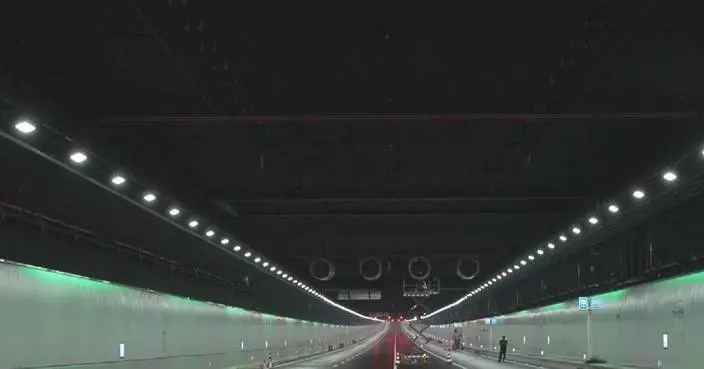Scientists from the Chang'e-6 lunar mission have unveiled the advanced technologies that protected the return capsule's communications system from extreme heat during its re-entry into the Earth atmosphere.
The Chang'e-6 mission concluded its 53-day journey with a touchdown in north China's Inner Mongolia Autonomous Region, marking a historic achievement as the first spacecraft to collect and return samples from the moon's far side, while paving the way for scientists to uncover potentially groundbreaking secrets about the moon.
During the re-entry at a speed of nearly 11.2 kilometers per second, the return capsule faced intense friction, enveloping it in a fiery ball. To safeguard the antenna's communications capability in such conditions, a heat-resistant antenna window played a crucial role.
Developed by the Shanghai Institute of Ceramics under the Chinese Academy of Sciences, the heat-resistant antenna microwave window boasts exceptional mechanical properties: thermal shock resistance and chemical stability.
This crucial component plays a pivotal role in protecting the antenna from heat and erosion during Chang'e-6's re-entry into the Earth atmosphere, ensuring its functionality in severe aerodynamic heating.
"The sample I'm holding is a prototype of the antenna window used on the Shenzhou spacecraft series. The Chang'e-6 antenna window has already been incorporated into the model, distinguished by its use of woven quartz glass, which provides better heat resistance compared to the antenna window used on our Shenzhou spacecraft," said Cao Yunzhen, a researcher at the Inorganic Coating Materials Research Center of the Shanghai Institute of Ceramics.
"This is a frame woven from carbon-quartz fibers, coated with a thick layer of metal on the surface. Inside, there's an antenna capable of transmitting microwave signals through this window. This setup ensures excellent electrical gain, capable of withstanding high temperatures to maintain the normal operation of the antenna system," Cao added.
On Wednesday morning, the Chang'e-6 return capsule arrived in Beijing for sample retrieval and payload removal.
The China National Space Administration plans a formal handover ceremony to transfer lunar samples to the Chinese Academy of Sciences, initiating storage, analysis, and research.

Scientist reveals heat-resistance secrets of Chang'e-6 capsule's communications

Scientist reveals heat-resistance secrets of Chang'e-6 capsule's communications









